Vermejo Park Ranch: Like a National Park, All For You
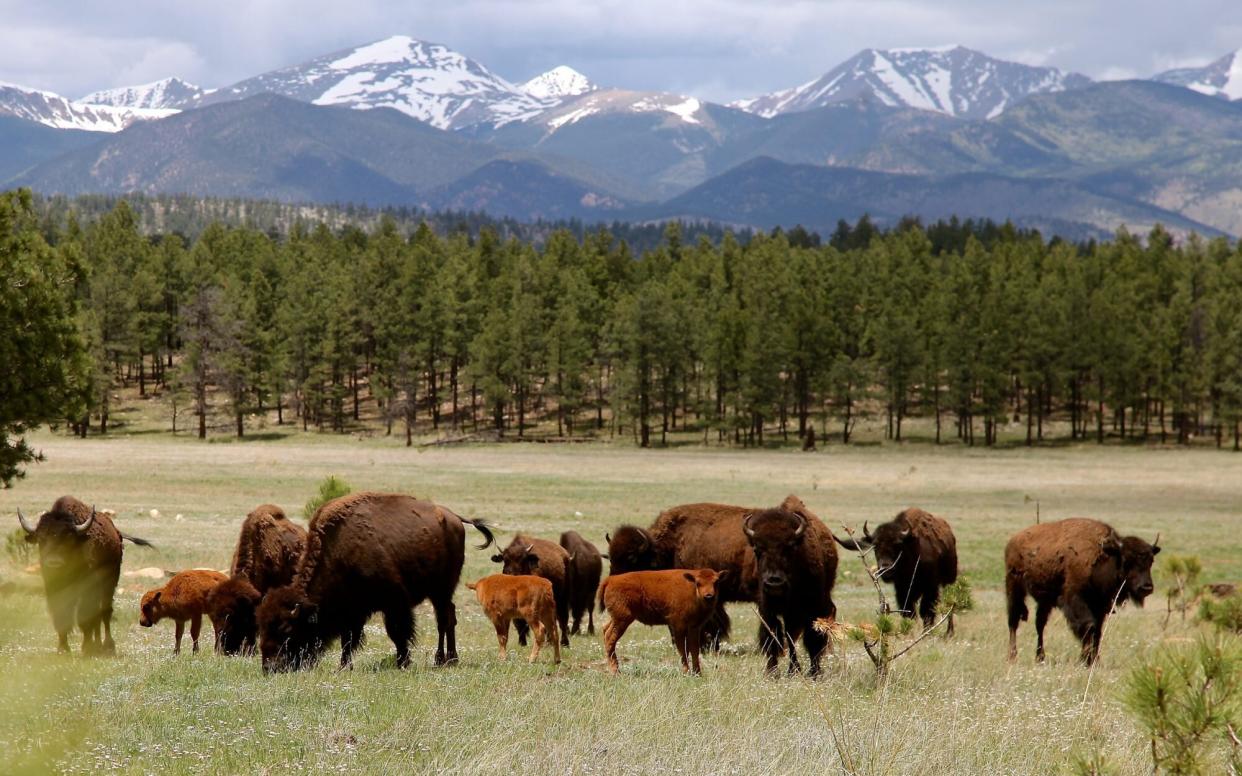
Turner Enterprises, Inc./Amanda Howell Photography
My first morning at Vermejo Park Ranch, cable mogul Ted Turner’s 585,000-acre property that straddles the New Mexico–Colorado border, Pete Furman, an affable guide from Killington, Vermont, took me and another guest on a hike to see one of his favorite views. He told us we might spot some elk along the way, and maybe even a cinnamon-colored black bear that had been observed several times near the main lodge in the previous week.
We didn’t see any animals as we climbed, just lots of scat and flattened grass that emanated a pungent scent, indicating that elk had slept there the night before. But we weren’t complaining. The June air was dry and warm as we ascended through a fragrant forest of ponderosa pine, the tree trunks framing the snowy peaks of the Sangre de Cristo Mountains. Slightly breathless from altitude and exertion, we strolled across an alpine meadow to a rocky outcropping to take in Pete’s preferred view. The wide green Costilla Valley was splayed out below, with the Vermejo River twisting through, like a garter snake on a lawn. The hike sure beat my usual Wednesday-morning commute.
After climbing back down, we stumbled upon a picturesque crime scene. The corpse of a mule deer lay, in several parts, near a creek bed. It had lost a battle with another animal, probably a mountain lion. The head still had fur on it, but the ribs had been picked clean by turkey vultures. Pete told us that, recently, a group of guests had been enjoying a sunset cocktail on the deck of the lodge when an elk had come tearing past, chased by a bear that caught up to it right before their eyes.
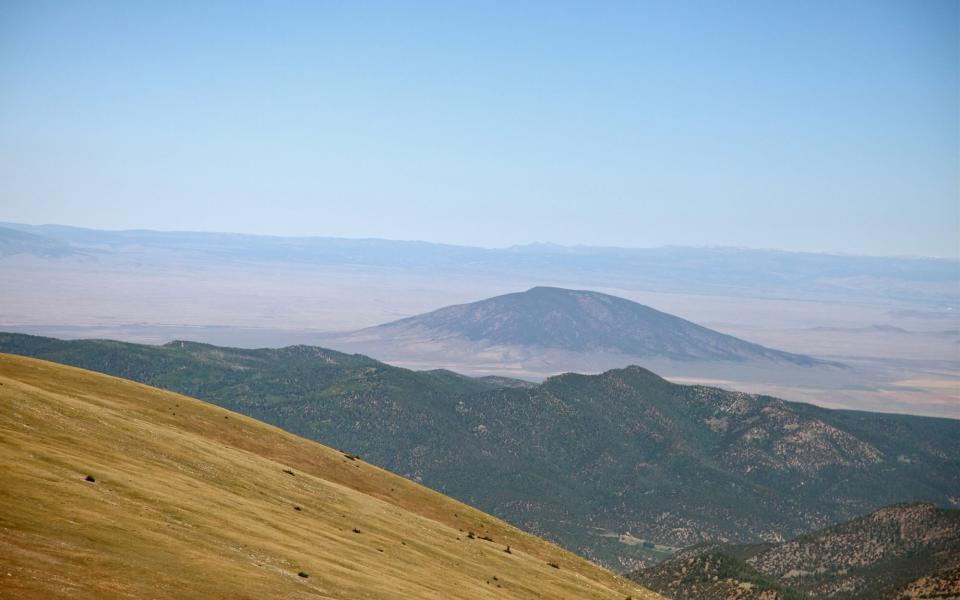
Turner Enterprises, Inc./Amanda Howell Photography
As we jounced back along the rutted dirt road toward the lodge (catching sight of our first elk family as we went), I realized that the experience of nature in the raw, unsanitized and unmediated, is one of Vermejo’s biggest selling points. What makes this possible, in large part, is that there are so few human beings poking around. I was one of just a couple hundred people on a parcel of land that is more than 900 square miles—not much less than the state of Rhode Island. It was like wandering around in a national park emptied of all the visitors. More than once, I had the sensation of being in a John Ford movie.
The ranch, which has long been a favored retreat for sportsmen, has gradually taken on a new identity as an ecotourism sanctuary since Turner purchased it from its previous corporate owner, Pennzoil, in 1996. (As a piece of property, it has a long and complicated history dating back to 1841, when it was established by a Mexican land grant.) Turner promptly set forth an ambitious conservation agenda that included removing the ranch’s cattle, introducing a bison herd, replacing non-native fish with endangered indigenous cutthroat trout, and a slew of other ecological remediation efforts.
Turner, the second-biggest private property owner in the United States, has undertaken similar efforts on many of the 14 other ranches he owns in the United States. (He has three more in Argentina.) Last year, he consolidated four of them—the Ladder and Armandaris ranches in southern New Mexico (along with the Sierra Grande Lodge & Spa, which sits between them), St. Phillips Island, off the southeastern coast of South Carolina, and Vermejo—under the banner of Ted Turner Expeditions, establishing Turner’s holdings as a true national adventure and ecotourism brand.
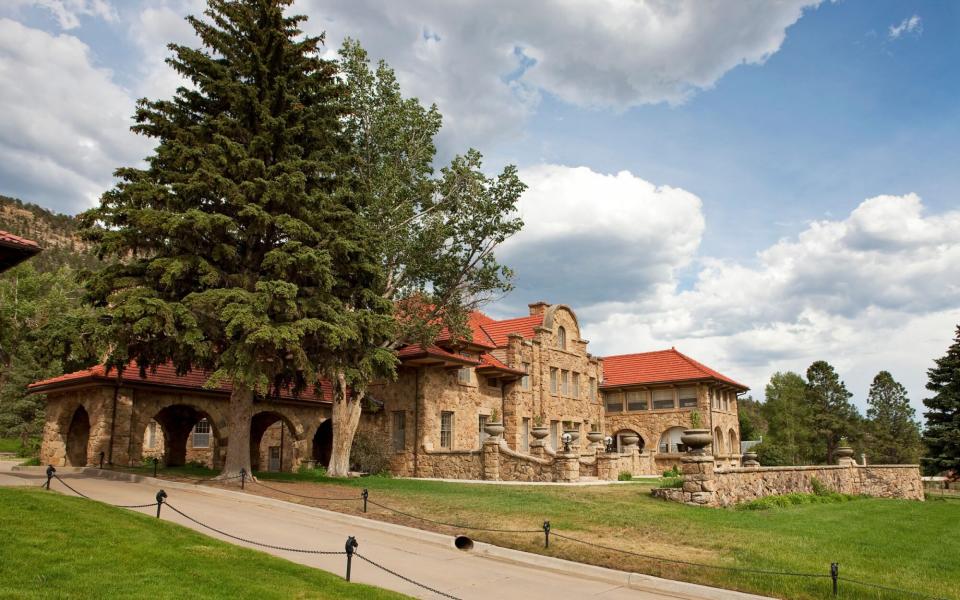
Turner Enterprises, Inc./Amanda Howell Photography
We’d come to Vermejo to usher in the next chapter in the life of the ranch: the reopening of Casa Grande, an opulent seven-bedroom, 25,000-square-foot stone mansion that is the property’s signature architectural attraction, after a four-year renovation. It was constructed between 1907 and 1909, by Joseph Lyman Silsbee, Frank Lloyd Wright’s mentor, for William Bartlett, a wealthy Chicago grain merchant who had purchased Vermejo as a kind of gentleman’s farm. For years, Casa Grande served as a tony mountain lodge for Hollywood royalty like Douglas Fairbanks, Mary Pickford, and Cecil B. DeMille. But subsequent owners treated Casa Grande poorly, and in recent decades most visitors to the ranch stayed at the comfortable but no-frills Casa Minor; in one of a few nearby bungalows; or in Costilla Lodge, up in the high country. The restoration of Casa Grande adds a note of true luxury to the ranch’s adventure experience.
With its mix of Steinways and taxidermy, marble columns and rough-hewn surfaces, Casa Grande embodies a kind of early-20th-century Western chic that borders on kitsch in the best possible way. It would not have felt out of place in North by Northwest. It even has a ghost. According to Brian Frasch, Casa Grande’s butler and unofficial folklorist, William Bartlett’s son Norman still wanders the estate and is extremely particular about the placement of a wooden rocking chair that sits before an attic window: move it, and you’ll find it moved back to its original location when you return. Myra McNamara, the general manager at the Sierra Grande Lodge & Spa, who was staying in Casa Grande, reported having had a close encounter of the paranormal kind—noises and lights switched on when she was all alone in the mansion.
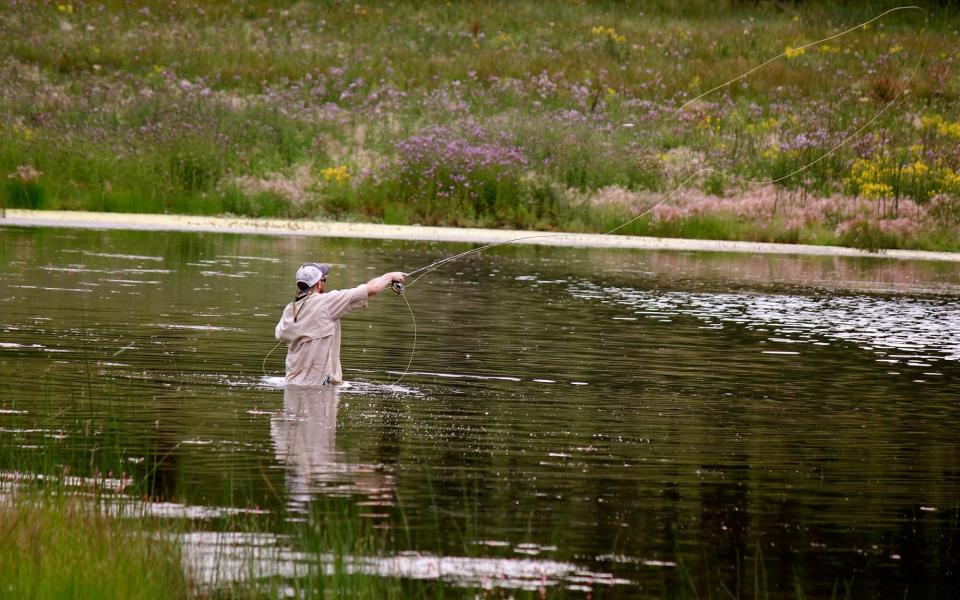
Turner Enterprises, Inc./Amanda Howell Photography
As pleasant as Casa Grande is, though, you come to Vermejo Park Ranch to be outside, and if that’s not where you’re spending most of your time, you’re not doing it right. At all times, there seems to be a battalion of enthusiastic, rugged young guys like Pete on call, dressed in a uniform of Oakleys, hunting shirts, and relaxed-fit jeans, just itching to take you on an adventure out on this land they clearly all love to death: hiking, hunting, fishing, riding horses, riding bikes, shooting, you name it. In the evenings, you retire to the lodge for a feast on the deck, dining on bison or elk or trout and vegetables grown on the ranch, watching another marvelous sunset over the Sangre de Cristos. After dark, you drink and roast s’mores and make new friends around a big fire, and feel very, very far away from everything else in your life.
My happiest moment at Vermejo came on a trail ride led by Doug Johnson, a true gentleman and a real cowboy with an incredible mustache and a slow, kind way of speaking, who has worked on the ranch since the 1970s. I am 38 years old and yet, somehow, this was the first time I’d ever ridden a horse. I guess I really am a city boy. And yet, it felt like the most natural thing in the world to be astride this gentle animal, loosely holding the reins as I trotted along in single file with nine or 10 other riders. Doug led us out of a valley and along a narrow forest path beside a babbling brook, then up toward snowcapped peaks, through alpine meadows dotted with wildflowers, past lakes that bore evidence of industrious beavers, and back onto the wide valley.
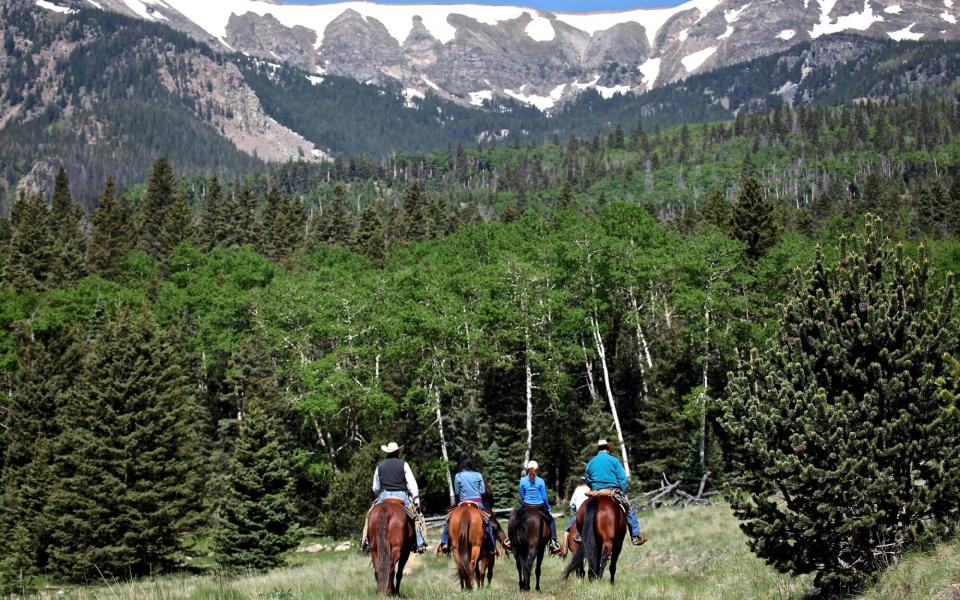
Turner Enterprises, Inc./Amanda Howell Photography
I found myself thinking about my two-year-old daughter back home in New York, and how much I wanted to share all the pretty things I was seeing with her. Also, I thought, it was important that she learn to ride a horse when she’s young and not wait till she’s old, like me. I asked Doug how early a child could start. “Some kids,” he said, “I’ll put ’em on a horse when they’re four, five years old.”
I told him I’d be back with my whole family in 2019.
Getting There
Colorado Springs, about three hours away, has the closest airport, but most visitors choose to fly into Denver or Albuquerque, both a little over four hours from Vermejo. The nearest town is Raton, New Mexico. For more information, visit vermejoparkranch.com.

